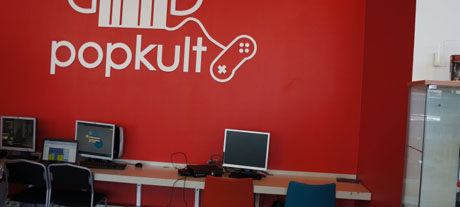The story is what counts even in multi-literacy

Some of methods tested and implemented in the Lukuinto project are small, everyday measures – for example, decoration of reading nooks – and some large media projects involving the municipality as a whole. Most often old is combined with the new: a text or a story is transformed into images, video or drama – or vice versa: video or, for example, a game is transformed into text. The functionality of the methods activates pupils while their own interpretation and its production inspire them.
The most important aspect is the story – it makes no difference whether it is told through a game, a film or a book. It is also possibly to inspire people to read through technology. E-books or, for example, creating your own animation about a fairytale read are an efficient way of teaching reading comprehension and how to summarise a story. The 60 tablet PCs of the Lukuinto programme have been in hard circulation around Finland and examples of book recommendation videos created with them, for example, in Turku can be viewed online.
Another powerful means to inspire reading is making reading visible and giving it value. When the whole school, including the teachers, Principal and cleaning staff, take their time to read or tell others what they think about when reading a book or a newspaper, children will see this as a role model. Reading by boys can also be promoted by male teachers telling about the books they read.
Reading will increase when the pupils' attitude towards reading becomes more positive. Peer interaction may be utilised, for example, so that older pupils read to the younger ones or vice versa. Book trailers made by the pupils could be shown and pupils who have successfully completed reading diplomas could be ceremoniously rewarded. Getting acquainted with library staff in regular book tip events would help young pupils to ask for assistance in information retrieval and planning of non-fiction texts.
Employees of libraries and schools may also help parents to inspire children and young people to read at home with various tips and advice; for example, it might be possible to watch the beginning of a story as a film and read the rest together from a book.




